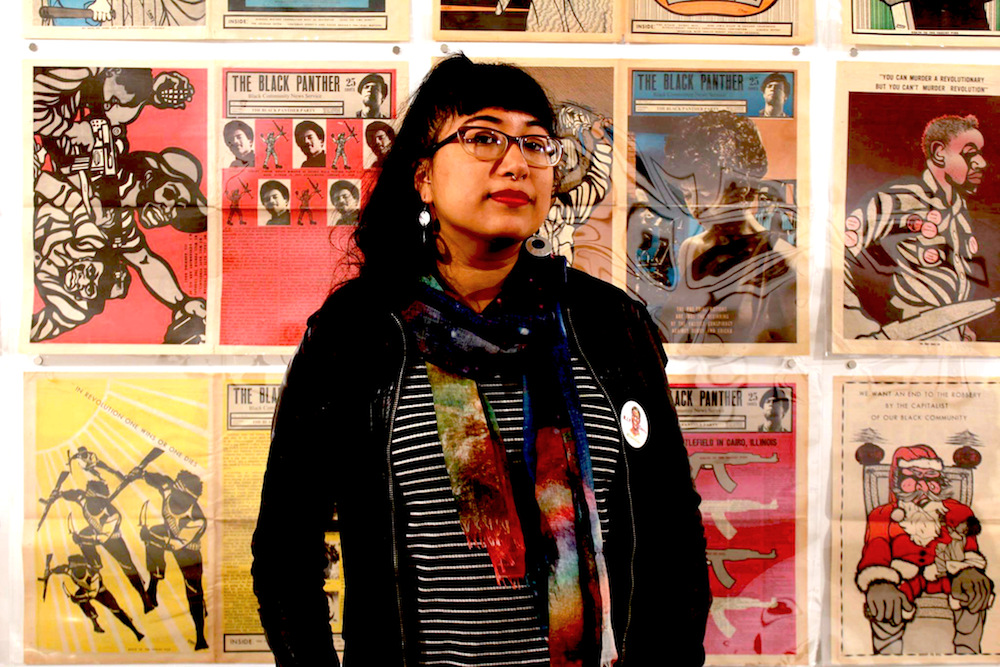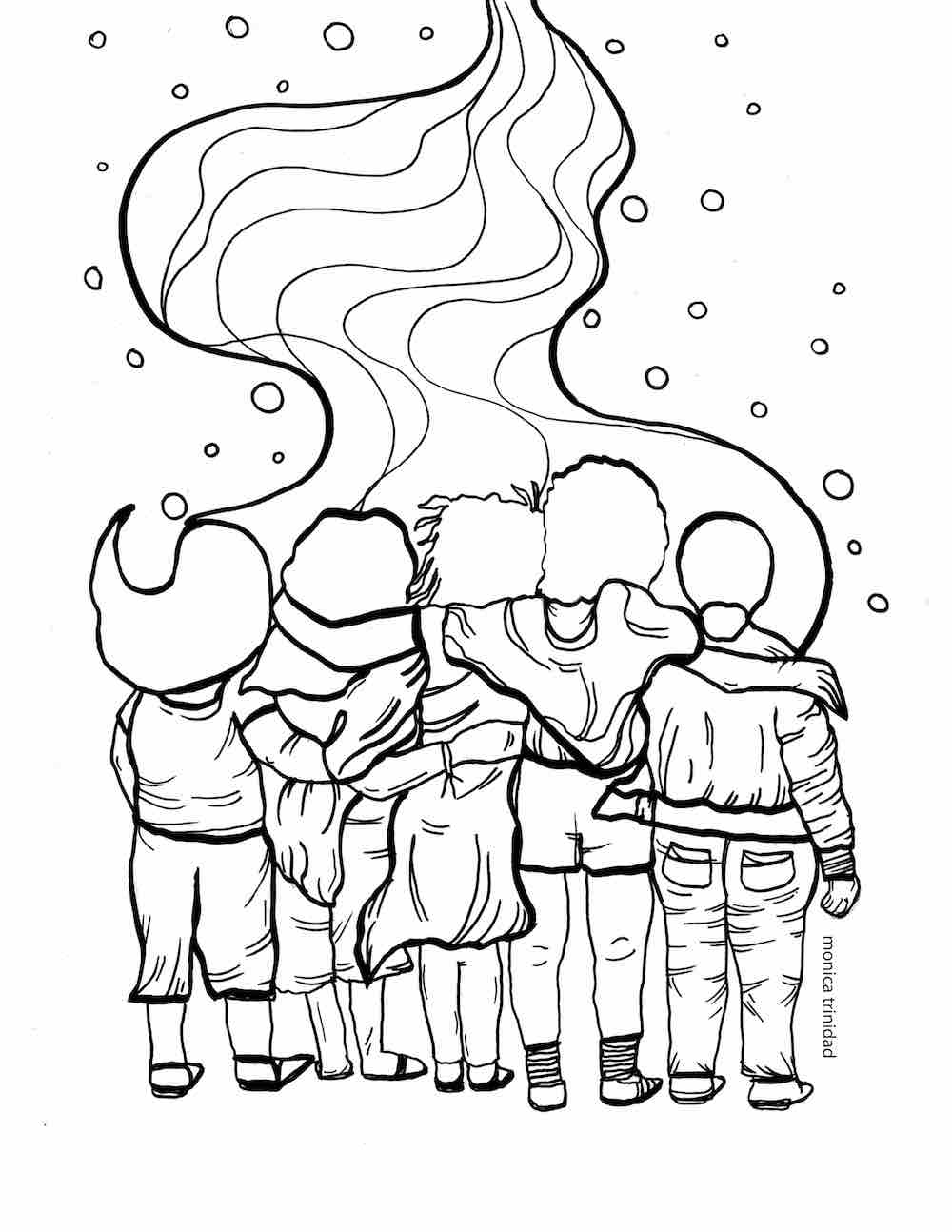
Monica Trinidad in front of an exhibition of work by Emory Douglas in NYC. Photo by Nicole Trinidad. Courtesy of Monica Trinidad.
Monica is a queer Latinx artist and organizer born and raised on Chicago’s southeast side. She is a co-founder of the For the People Artists Collective and Brown and Proud Press.
Lewis Wallace: On your website, you describe yourself as a community-taught artist. What does that mean?
Monica Trinidad: Often artists’ websites and portfolios say that they went to art school and have a degree in art, or they say they’re self-taught. I used to say that I was a self-taught artist. But then I realized that I’m not a self-taught artist; I’ve learned a lot of my art capabilities and skills from different people in my community, whether it was through people teaching me a skill or talking me through the process. I was like, okay, I’m just going to spread the love around, instead of just being all about me.
LW: How do you continue to learn from your community, as an artist?
MT: Well, the intention of the For the People Artists Collective was to increase the visibility of Black artists and other artists of color in Chicago, who double as activists and organizers. We try to do monthly skill-sharing sessions. For example, some of us know how to make block prints or screen prints; some of us know how to make animations. We try to teach each other on a consistent basis because we know that often classes and workshops to learn something like screen-printing are expensive, like $500. I can’t do that. We’re utilizing the skills around us to continually uplift and increase the capabilities of our work.

Monica Trinidad. Drawing for an upcoming chapbook for Kuumba Lynx. Courtesy of the artist.
LW: A lot of your visual art is motivated by social movements, and is involved in some way with activism. When you have an idea for a project or piece, what is your process like?
MT: I went into shaping the collective with the words of Emory Douglas in mind, the former minister of culture of the Black Panther Party. “No artist can sit in an ivory tower, discussing the problems of the day, and come up with a solution on a piece of paper. The artist has to be down on the ground.”1
That laid the foundation for our work as a collective, as artists in various marginalized communities in Chicago, to emphasize the importance of self-representation, of personal narratives as catalysts for social change and healing in our work. We strive to do slow and steady work. We often get asked to create a time-consuming piece in a really short amount of time, and we have to stop and ask ourselves: is this interaction just transactional, or will there be room for building actual relationships? I think that the process is just as important as the outcome.
A piece of art that depicts the struggles in our communities is important, but I think how the piece was created, and who was at the table as that piece was being made, is more important if we’re creating a piece that’s trying to capture the beauty of a campaign or an effort. We need to stop relying on reinterpreting the most popular or the most shared items on social media; we need to think about who is missing from those widely disseminated photos or who did the bulk of the invisible labor for that campaign or effort. How can we make sure that we honor that labor while we uplift the whole campaign or project. It’s really hard. But, again, it’s about that super slow process.

Monica Trinidad. Watercolor created for the Chicago Freedom School. Courtesy of the artist.
LW: I want to ask you about a more conventional sort of balance: living a balanced life, as an individual. How do you balance this huge amount of work—as an artist, as an activist, as a collaborator—with your need to eat and sleep and take breaks?
MT: That question comes up a lot for me and other movement artists, and we don’t have an answer. How do you balance making art that uplifts and supports the struggles in our communities and making art to materially sustain yourself? And I have no idea… I struggle with that daily.
I like to balance the work that I do for my communities, that I can do free or low cost, with asking institutions for more. “Hey, institution that’s inviting me to speak about art and activism. Will you pay me a large amount of money?”
Institutions that have money? They should pay artists of color extremely well because I know that they have those resources.
1. The Dr. Huey P. Newton Foundation, The Black Panther Party: Service to the People Programs (Albuquerque: University of New Mexico, 2010), 123.



